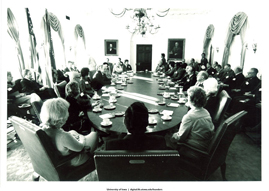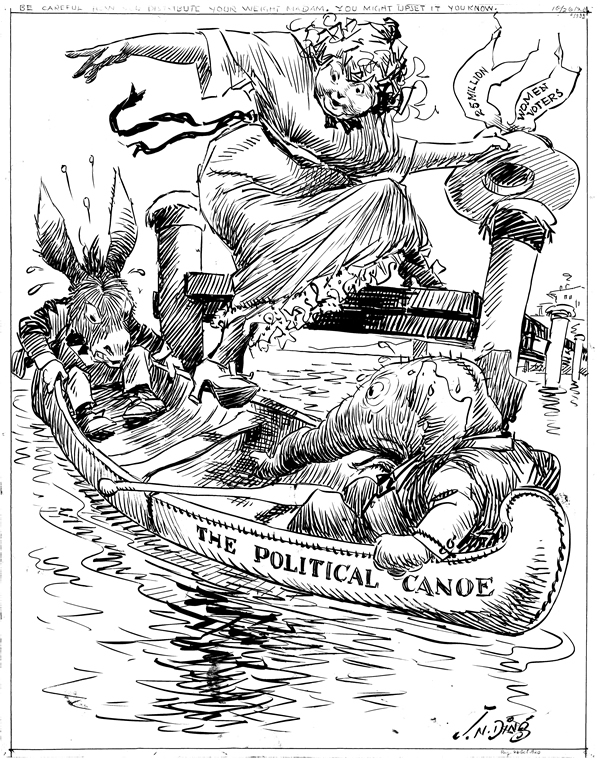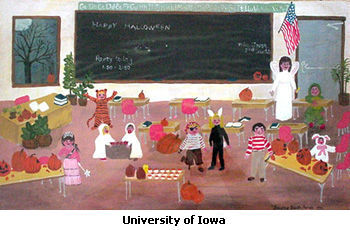In honor of African American History Month, DLS will be highlighting the stories of African Americans featured in the Iowa Digital Library. First up is Digital Librarianship Fellow Shawn Averkamp on Dora Martin Berry, campus queen of the UI (then State University of Iowa), 1955.
Though segregation was never a matter of official policy at The University of Iowa,  African American students were routinely shut out from housing, student organizations, hair salons, restaurants, and social activities, and were left to form their own student communities outside of The University. As a result, there is little documentation of these African American fraternities, sororities, literary societies, and other student clubs in University publications, such as yearbooks and newspapers, or within the Libraries’ archives. Following the trail left by researchers Richard M. Breaux and Madgetta Thornton Dungy, we gathered artifacts scattered across the Libraries and outside repositories to create a digital collection that would highlight the experiences and achievements of African American women students at The University.
African American students were routinely shut out from housing, student organizations, hair salons, restaurants, and social activities, and were left to form their own student communities outside of The University. As a result, there is little documentation of these African American fraternities, sororities, literary societies, and other student clubs in University publications, such as yearbooks and newspapers, or within the Libraries’ archives. Following the trail left by researchers Richard M. Breaux and Madgetta Thornton Dungy, we gathered artifacts scattered across the Libraries and outside repositories to create a digital collection that would highlight the experiences and achievements of African American women students at The University.
Among the many stories in this digital collection is that of Dora Martin Berry,  the first African American woman to win the title of Miss State University of Iowa. Berry came to Iowa City from Houston, Texas, in 1955, a “wide-eyed and excited” seventeen-year-old. Though she was only a freshman, Berry was selected by the women in her dormitory to proceed to the semifinals of the pageant. With overwhelming support from the African American student community, she earned the majority of votes needed from the male student electorate to win the title of Miss SUI. The national news broke the story before Berry was even crowned queen, and she immediately was inundated with calls from reporters across the country. In the midst of school desegregation, the press attention continued for months with many news services heralding Berry’s victory as a testament to Northern racial tolerance. Back at The University of Iowa, however, Berry found a less than tolerant response to her success. The University politely denied her the duties and appearances traditionally held by the campus queen, and she quickly faded back into the student body, never
the first African American woman to win the title of Miss State University of Iowa. Berry came to Iowa City from Houston, Texas, in 1955, a “wide-eyed and excited” seventeen-year-old. Though she was only a freshman, Berry was selected by the women in her dormitory to proceed to the semifinals of the pageant. With overwhelming support from the African American student community, she earned the majority of votes needed from the male student electorate to win the title of Miss SUI. The national news broke the story before Berry was even crowned queen, and she immediately was inundated with calls from reporters across the country. In the midst of school desegregation, the press attention continued for months with many news services heralding Berry’s victory as a testament to Northern racial tolerance. Back at The University of Iowa, however, Berry found a less than tolerant response to her success. The University politely denied her the duties and appearances traditionally held by the campus queen, and she quickly faded back into the student body, never  officially recognized by University administration.
officially recognized by University administration.
In addition to the news clippings, photos, and oral history excerpts that frame the story of Dora Martin Berry, there is a wide variety of artifacts in this collection offering glimpses into the lives of other African American university women. Iowa Bystander newspaper articles circa 1919 chronicle the activities of the fledgling Iowa City chapter of the Delta Sigma Theta sorority. Snapshots from the Althea Beatrice Moore Smith scrapbook capture student life in the mid-1920s. Dance cards from the Esther Walls collection at the Iowa Women’s Archives commemorate formal dances attended in the 1940s by one of the first African American women to live in the dorms.
Please visit the African American Women Students at The University of Iowa Digital Collection to learn more about these students who overcame racism and discrimination to receive their education at the UI.
–Shawn Averkamp
Digital Librarianship Fellow

 Name: Bryan Stusse
Name: Bryan Stusse part of the project was overcoming the technical and preservation needs for digitization of the ATN collection.
part of the project was overcoming the technical and preservation needs for digitization of the ATN collection. Name: Shawn Averkamp
Name: Shawn Averkamp

 Name: Jane Monson
Name: Jane Monson
 Name: Jill Wehrheim
Name: Jill Wehrheim







 monstruous misdeeds of early 20th century politicians in Ding Darling’s late-October
monstruous misdeeds of early 20th century politicians in Ding Darling’s late-October